Socio-Ecological Adaptation of Agricultural Heritage Systems in Modern China: Three Cases in Qingtian County, Zhejiang Province
Abstract
:1. Introduction
2. Study Area
2.1. Qingtian County and Rice-Fish Culture
2.2. Location of Case Villages
3. Material and Methods
3.1. The Framework of Complex Adaptive Systems (CAS)
3.2. Data Collection and Processing
4. Results
4.1. Longxian Village
4.2. Xiaozhoushan Village
4.3. Renzhuang Village
5. Discussion
6. Conclusions
Acknowledgments
Author Contributions
Conflicts of Interest
References
- You, X. Rice-Fish Agriculture: One of the Typical Sustainable Traditional Agricultural Models. In Multi-Stakeholder Processes in the Conservation of Agricultural Heritage Systems; Min, Q., Zhong, Q., Eds.; China Environmental Science Press: Beijing, China, 2006; pp. 36–40. (In Chinese) [Google Scholar]
- Min, Q.; Li, W.; Yang, G. Rice-Fish Culture in China. In Dynamic Conservation and Adaptive Management of China’s GIAHS: Theories and Practices (I); Min, Q., Ed.; China Environmental Science Press: Beijing, China, 2009; pp. 37–88. [Google Scholar]
- Koohafkan, P. Conservation and Sustainable Management of Globally Important Agricultural Heritage Systems. In Agricultural Heritage Systems and Exploration of Their Dynamic Conservation; Min, Q., Ed.; China Environmental Science Press: Beijing, China, 2008; pp. 97–102. (In Chinese) [Google Scholar]
- Altieri, M.A.; Koohafkan, P. Globally Important Ingenious Agricultural Heritage Systems (GIAHS): Extent, Significance, and Implications for Development. Available online: http://www.fao.org/docrep/015/ap021e/ap021e.pdf (accessed on 8 September 2007).
- Min, Q.; Sun, Y.; van Schoubroeck, F.; Liang, L.; DelaCruz, M. The GIAHS-rice-fish culture: China project framework. Resour. Sci. 2009, 31, 10–20. [Google Scholar]
- Min, Q. The characteristics and conservation of agricultural heritage systems. World Environ. 2011, 1, 18–19. (In Chinese) [Google Scholar]
- Min, Q.; He, L.; Sun, Y.; Zhang, D.; Yuan, Z.; Xu, Y.; Bai, Y. On the value, conservation and sustainable development of GIAHS pilot sites in China. Chin. J. Eco-Agric. 2012, 20, 668–673. (In Chinese) [Google Scholar] [CrossRef]
- Zhao, Y. Leaving the countryside: Rural-to-urban migration decisions in China. Am. Econ. Rev. 1999, 89, 281–286. [Google Scholar] [CrossRef]
- Shen, J. Counting urban population in Chinese censuses 1953–2000: Changing definitions, problems and solutions. Popul. Space Place 2005, 11, 381–400. [Google Scholar] [CrossRef]
- Fu, Y.; Gabriel, S.A. Labor migration, human capital agglomeration and regional development in China. Reg. Sci. Urban Econ. 2012, 42, 473–484. [Google Scholar] [CrossRef]
- Golley, J.; Wei, Z. Population dynamics and economic growth in China. China Econ. Rev. 2015, 35, 15–32. [Google Scholar] [CrossRef]
- Naughton, B. What is distinctive about China’s economic transition? State enterprise reform and overall system transformation. J. Comp. Econ. 1994, 18, 470–490. [Google Scholar] [CrossRef]
- Zhang, K.H. How does foreign direct investment affect economic growth in China? Econ. Transit. 2003, 9, 679–693. [Google Scholar] [CrossRef]
- Rodrik, D. What’s so special about China’s exports? China World Econ. 2006, 14, 1–19. [Google Scholar] [CrossRef]
- Deng, L.; Wang, B. Regional Capital Flows and Economic Regimes: Evidence from China. Econ. Lett. 2015, 141, 80–83. [Google Scholar] [CrossRef]
- Zhang, K.H.; Song, S. Rural-urban migration and urbanization in China: Evidence from time-series and cross-section analyses. China Econ. Rev. 2003, 14, 386–400. [Google Scholar] [CrossRef]
- United Nations. World Urbanization Prospects: The 2003 Revision; Population Division, Department of Economic and Social Affairs, United Nations: New York, NY, USA, 2004. [Google Scholar]
- He, C.; Chen, T.; Mao, X.; Zhou, Y. Economic transition, urbanization and population redistribution in China. Habitat Int. 2016, 51, 39–47. [Google Scholar] [CrossRef]
- Park, A.; Wang, S. China’s poverty statistics. China Econ. Rev. 2001, 12, 384–398. [Google Scholar] [CrossRef]
- Chen, S.; Ravallion, M. More relatively-poor people in a less absolutely-poor world. Rev. Income Wealth 2013, 59, 1–28. [Google Scholar] [CrossRef]
- Ward, P.S. Transient poverty, poverty dynamics, and vulnerability to poverty: An empirical analysis using a balanced panel from rural China. World Dev. 2016, 78, 541–553. [Google Scholar] [CrossRef] [PubMed]
- Leung, C.K. Foreign manufacturing investment and regional industrial growth in Guangdong Province, China. Environ. Plan. A 1996, 28, 513–536. [Google Scholar] [CrossRef]
- Zhao, S.X.; Chan, R.C.; Sit, K.T. Globalization and the dominance of large cities in contemporary China. Cities 2003, 20, 265–278. [Google Scholar] [CrossRef]
- Han, J. Evolution of the relationship between rural and urban areas in the past sixty years: Looking back and prospect. Reform 2009, 11, 14–17. (In Chinese) [Google Scholar]
- Li, X.; Qi, G.; Tang, L.; Zhao, L.; Jin, L.; Guo, Z.; Wu, J. Agricultural Development in China and Africa: A Comparative Analysis; Earthscan-Routledge: London, UK, 2012. [Google Scholar]
- Zhou, Z. The hollowing out of China’s rural population and its challenges. Popul. Res. 2008, 32, 45–52. (In Chinese) [Google Scholar]
- Xiang, Q. Investigation and thinking on the hollowing out of the rural population in mountainous areas: Taking Cangxi County, Sichuan Province as an example. Rural Econ. 2012, 6, 97–100. (In Chinese) [Google Scholar]
- Zhang, S.; Wu, R. Effects of the loss of agricultural labor on the agricultural development. Soc. Sci. Yunnan 2002, 1, 36–39. (In Chinese) [Google Scholar]
- Yu, X.; Kong, R.; Xu, Y. Characteristic of Countryside Surplus Labor Force Shift and Influence on Rural Economy Development and Countermeasures in China. Res. Agric. Mod. 2007, 28, 696–699. (In Chinese) [Google Scholar]
- Ye, J.; Wang, C.; Wu, H.; He, C.; Liu, J. Internal migration and left-behind populations in China. J. Peasant Stud. 2013, 40, 1119–1146. [Google Scholar] [CrossRef]
- Shao, Y. Analysis on agricultural population flowing and innovation of rural land institution. Popul. J. 2007, 4, 36–39. (In Chinese) [Google Scholar]
- Qiu, C.; Zhang, C.; Shen, Z.; Liu, D. Theoretical analysis of the relationship between rural labor transfer and land transfer. Rural Econ. 2008, 12, 26–29. (In Chinese) [Google Scholar]
- Yang, T.D. China’s land arrangements and rural labor mobility. China Econ. Rev. 1997, 8, 101–115. [Google Scholar] [CrossRef]
- De Brauw, A.; Huang, J.; Rozelle, S.; Zhang, L.; Zhang, Y. The evolution of China’s rural labor markets during the reforms. J. Comp. Econ. 2002, 30, 329–353. [Google Scholar] [CrossRef]
- Liu, C.; Li, X. Regional disparity in the changes of agricultural land use intensity in China during 1980–2002. J. Geogr. Sci. 2006, 16, 286–292. [Google Scholar] [CrossRef]
- Jin, S.; Deininger, K. Land rental markets in the process of rural structural transformation: Productivity and equity impacts from China. J. Comp. Econ. 2009, 37, 629–646. [Google Scholar] [CrossRef]
- Feng, S.; Heerink, N.; Ruerd, R.; Qu, F. Land rental market, off-farm employment and agricultural production in Southeast China: A plot-level case study. China Econ. Rev. 2010, 21, 598–606. [Google Scholar] [CrossRef]
- Xie, Y.; Jiang, Q. Land arrangements for rural-urban migrant workers in China: Findings from Jiangsu Province. Land Use Policy 2016, 50, 262–267. [Google Scholar] [CrossRef]
- Liu, Y. Transnational Emigration Waves from Southern Zhejiang: Development and Changes. Southeast Asian Aff. 2009, 137, 66–73. (In Chinese) [Google Scholar]
- Li, W. Agro-Ecological Farming Systems in China; Parthenon Publishing: Paris, France, 2001. [Google Scholar]
- Altieri, M.A.; Koohafkan, P. Enduring Farms: Climate Change, Smallholders and Traditional Farming Communities; TWN Environment and Development Series 6; Third World Network: Penang, Malaysia, 2008. [Google Scholar]
- Fuller, T.; Min, Q. Understanding Agricultural Heritage Sites and Complex Adaptive Systems: The Challenge of Complexity. J. Resour. Ecol. 2013, 4, 195–201. [Google Scholar] [CrossRef]
- Fuller, A.M.; Min, Q.; Jiao, W.; Bai, Y. Globally Important Agricultural Heritage Systems (GIAHS) of China: The challenge of complexity in research. Ecosyst. Health Sustain. 2015, 1, 6. [Google Scholar] [CrossRef]
- Casti, J.L. Complexification: Explaining a Paradoxical World through the Science of Surprise; HarperCollins: New York, NY, USA, 1994. [Google Scholar]
- Kay, J.J.; Schneider, E. Embracing complexity: The challenge of the ecosystem approach. Alternatives 1994, 20, 32–39. [Google Scholar]
- Waltner-Toews, D. Ecosystem Sustainability and Health: A Practical Approach; Cambridge University Press: Cambridge, UK, 2004. [Google Scholar]
- Gunderson, L.H.; Holling, C.S. Panarchy: Understanding Transformations in Human and Natural Systems; Island Press: Washington, DC, USA, 2002. [Google Scholar]
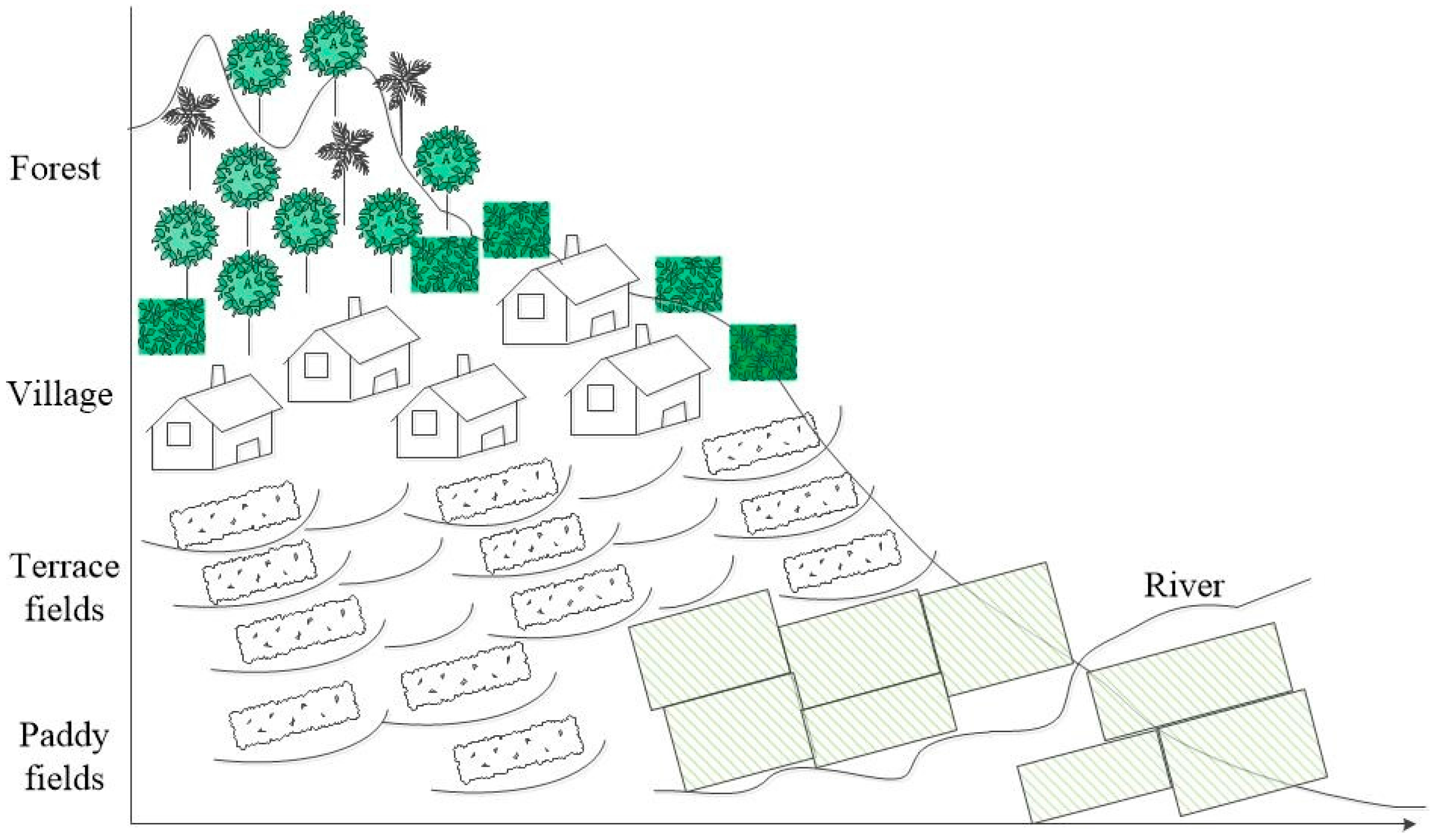

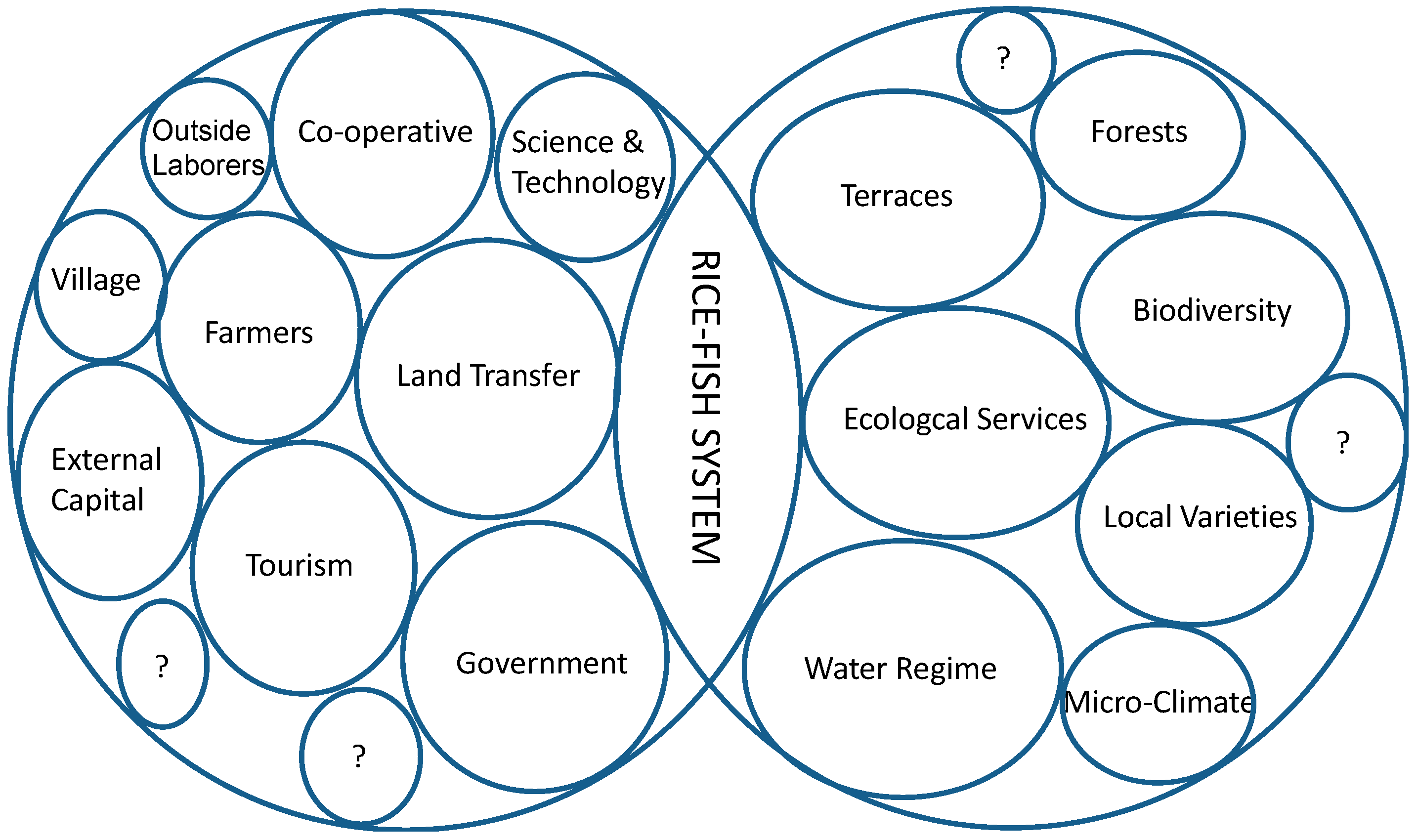
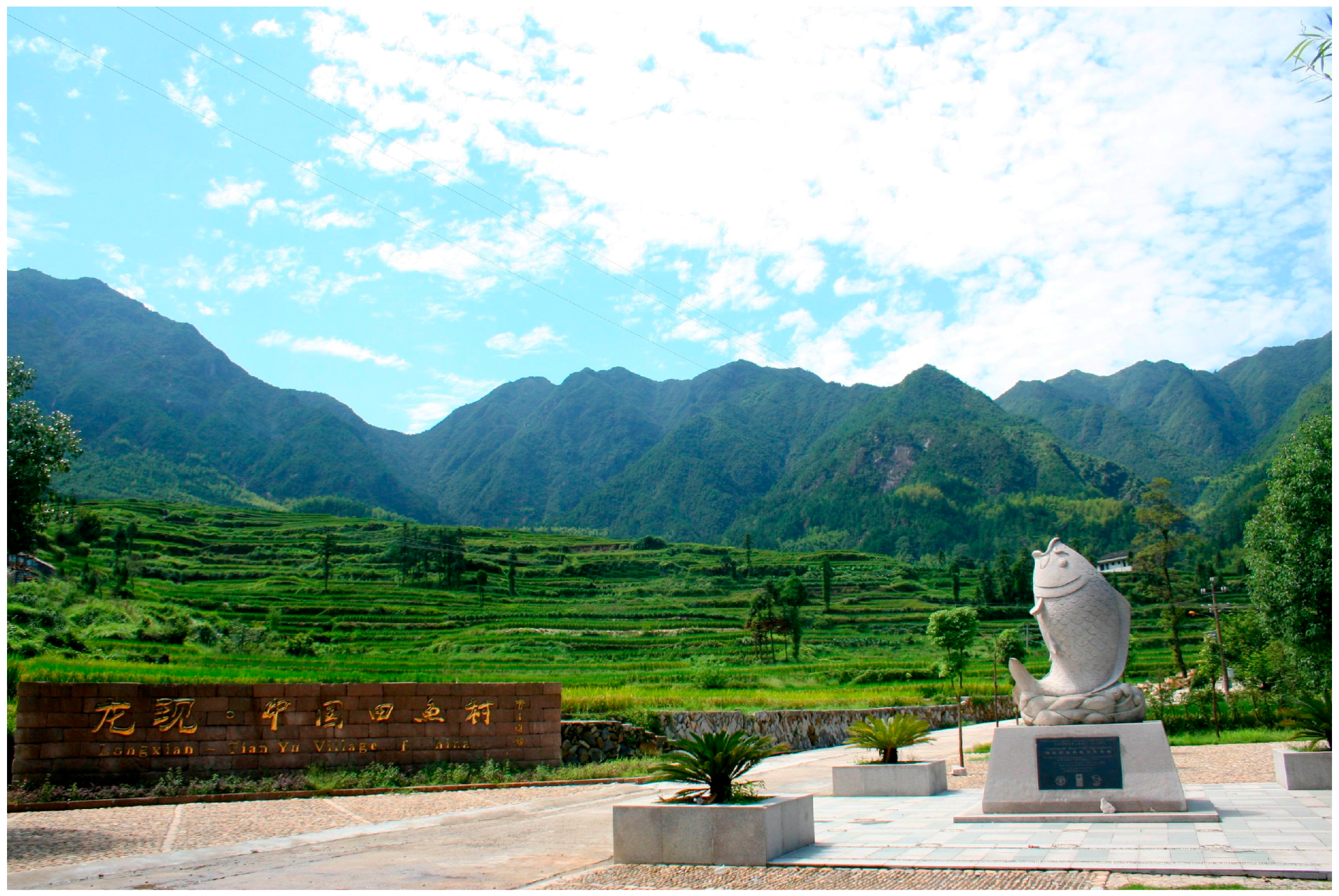
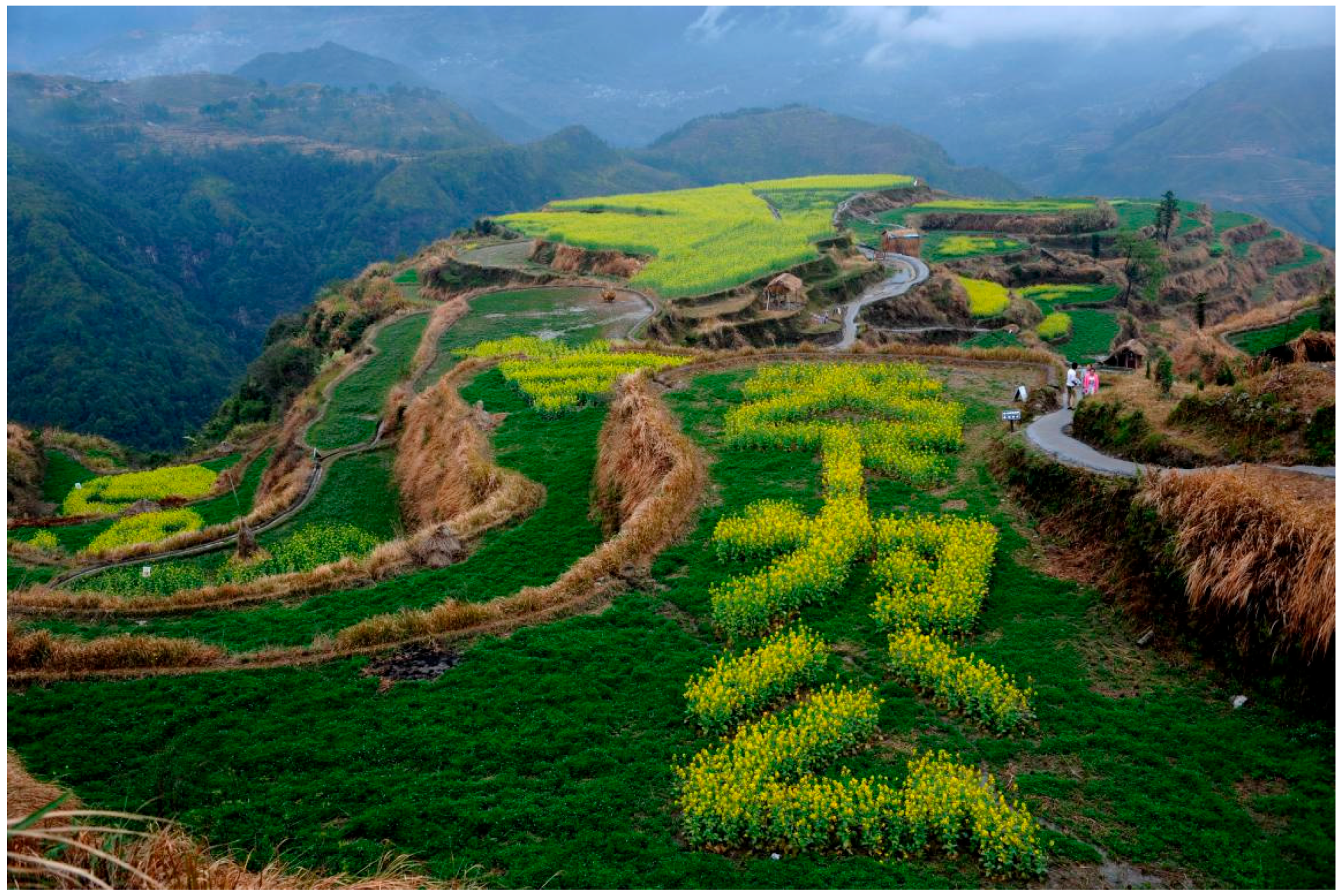
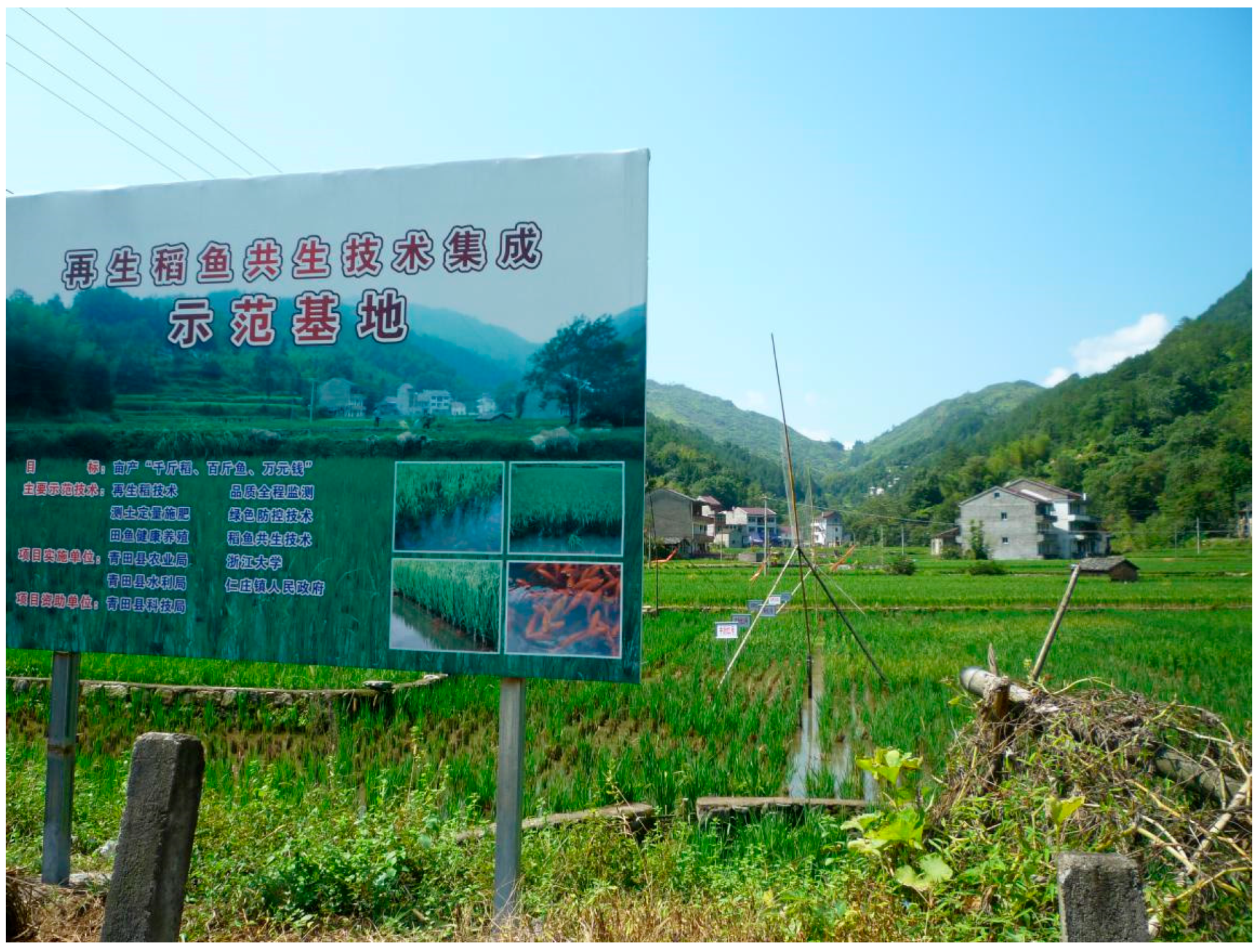
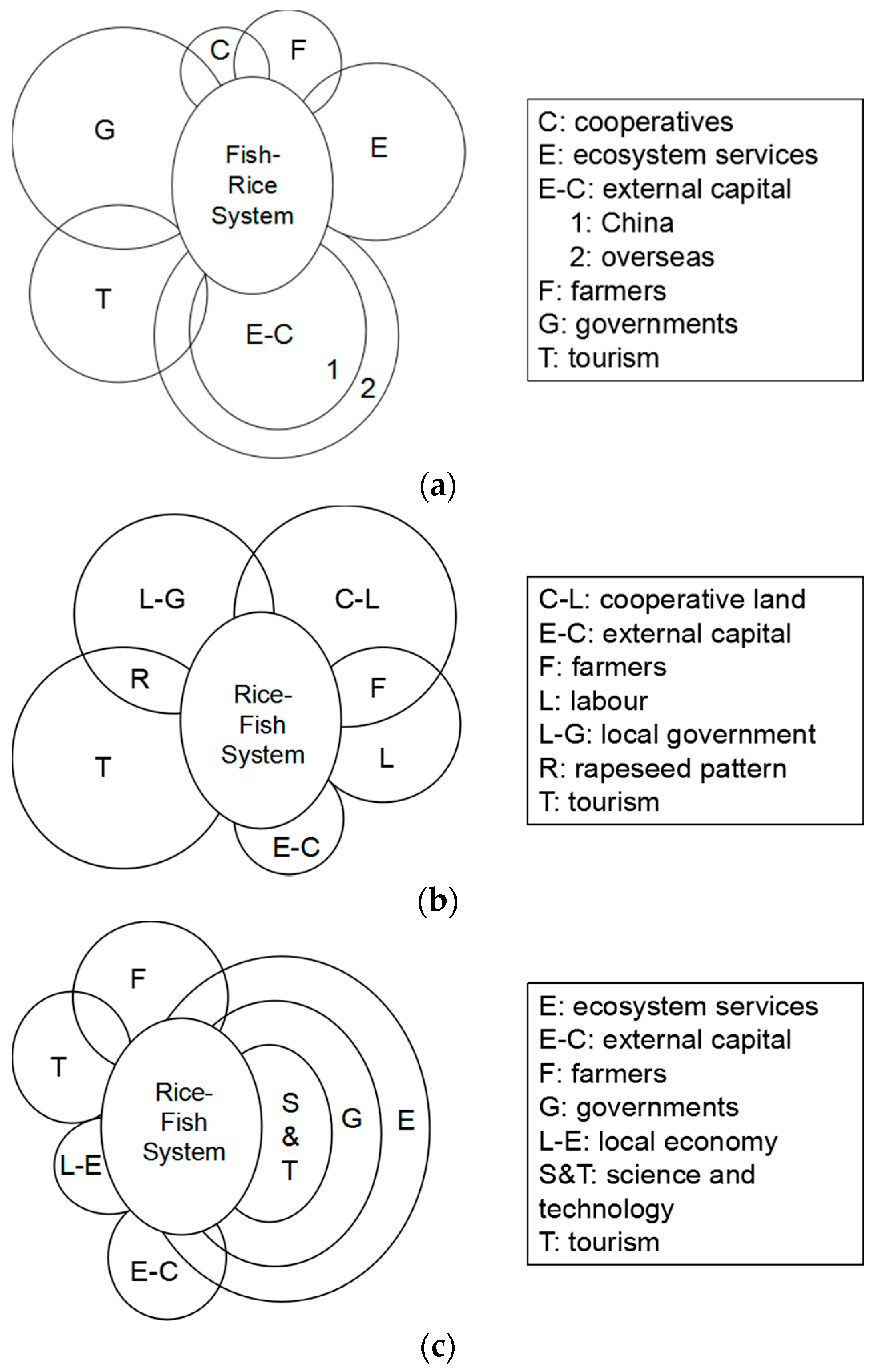
| Village | Registered Residents | Present Residents * | Percentage of People “out” | Arable Land in Village (mu **) | Arable Land Used (mu) | Percentage of Abandoned Land |
|---|---|---|---|---|---|---|
| Longxian | 869 | 300 | 65% | 450 | 300 | 33% |
| Xiaozhoushan | 1160 | 160 | 86% | 700 | 540 | 23% |
| Renzhuang | 4686 | 2325 | 50% | 420 | 300 | 29% |
© 2016 by the authors; licensee MDPI, Basel, Switzerland. This article is an open access article distributed under the terms and conditions of the Creative Commons Attribution (CC-BY) license (http://creativecommons.org/licenses/by/4.0/).
Share and Cite
Jiao, W.; Fuller, A.M.; Xu, S.; Min, Q.; Wu, M. Socio-Ecological Adaptation of Agricultural Heritage Systems in Modern China: Three Cases in Qingtian County, Zhejiang Province. Sustainability 2016, 8, 1260. https://doi.org/10.3390/su8121260
Jiao W, Fuller AM, Xu S, Min Q, Wu M. Socio-Ecological Adaptation of Agricultural Heritage Systems in Modern China: Three Cases in Qingtian County, Zhejiang Province. Sustainability. 2016; 8(12):1260. https://doi.org/10.3390/su8121260
Chicago/Turabian StyleJiao, Wenjun, Anthony M. Fuller, Siyuan Xu, Qingwen Min, and Minfang Wu. 2016. "Socio-Ecological Adaptation of Agricultural Heritage Systems in Modern China: Three Cases in Qingtian County, Zhejiang Province" Sustainability 8, no. 12: 1260. https://doi.org/10.3390/su8121260
APA StyleJiao, W., Fuller, A. M., Xu, S., Min, Q., & Wu, M. (2016). Socio-Ecological Adaptation of Agricultural Heritage Systems in Modern China: Three Cases in Qingtian County, Zhejiang Province. Sustainability, 8(12), 1260. https://doi.org/10.3390/su8121260






